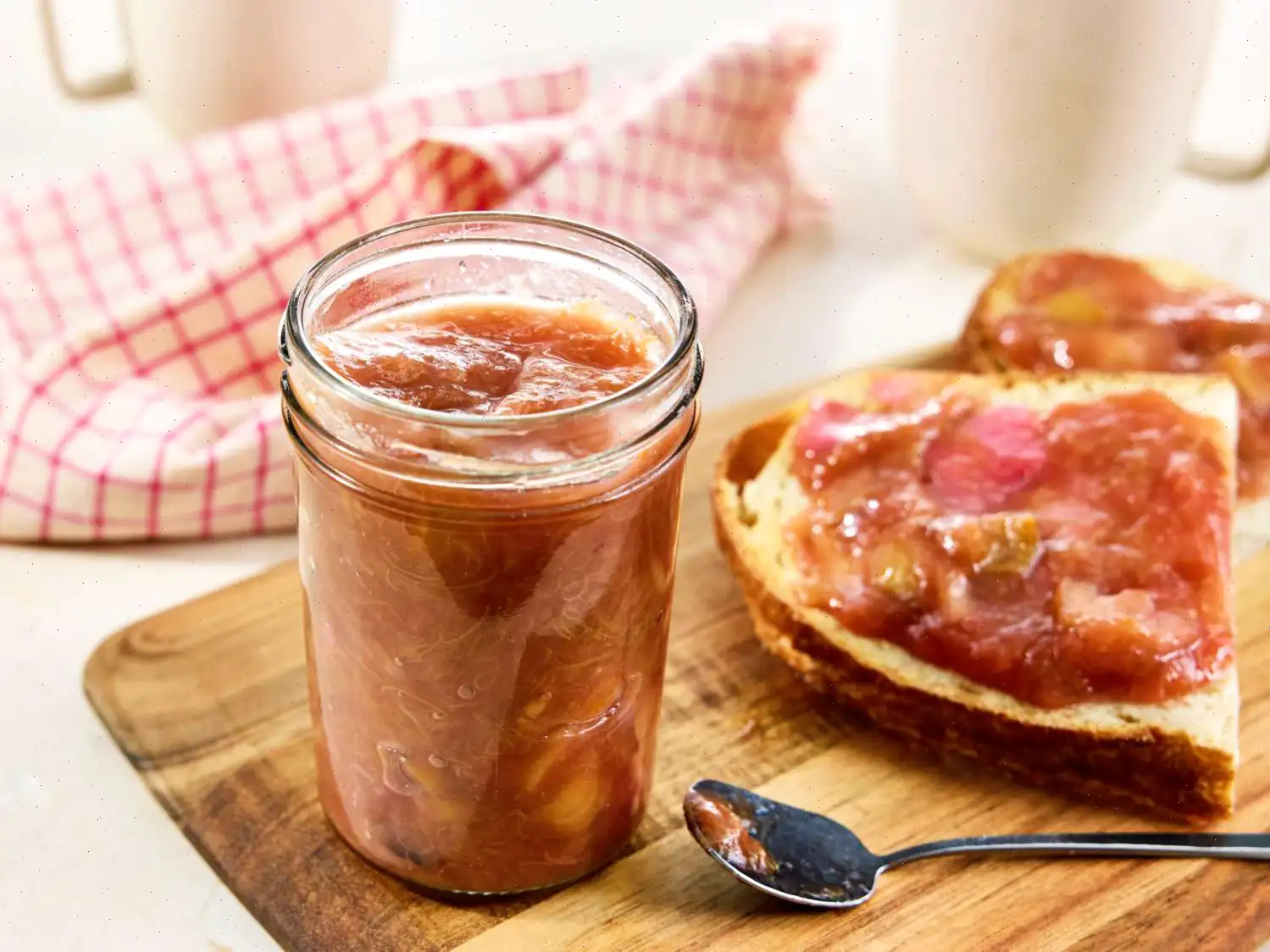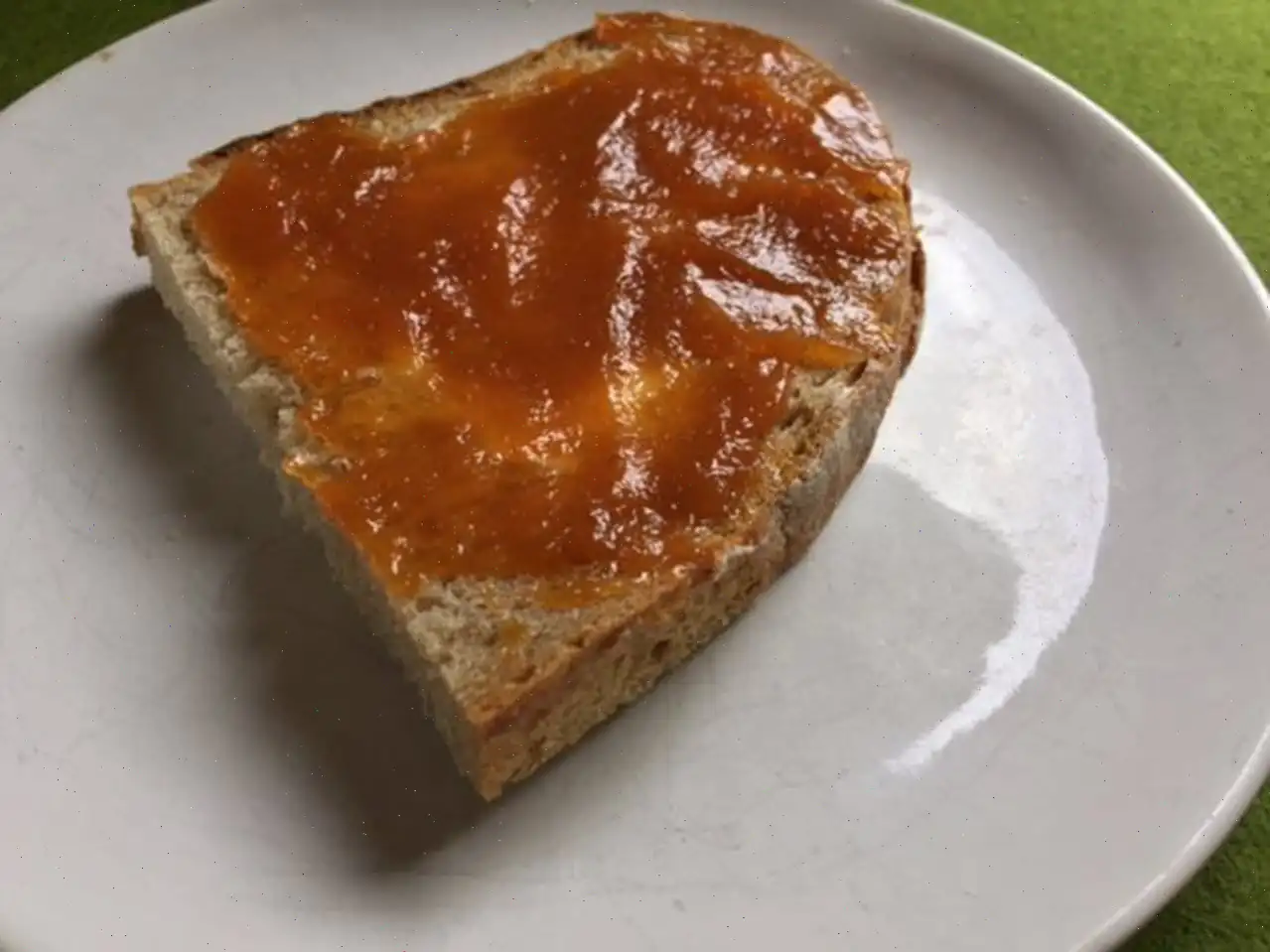
Quince Jelly Recipe
Quince Jelly Recipe
This delightful quince jelly is a sweet and tangy treat that pairs perfectly with toast or cheese. Follow these simple steps for a perfect result every time.
Ingredients
- 7 cups sugar
- 3 fluid ounces liquid pectin
- 4 cups water
- 3 pounds quinces, cored and chopped, peels on
- cup lemon juice
Directions
Step 1: Sterilize eight -pint jars in boiling water for at least 5 minutes. Make sure you have new lids ready for sealing.
Step 2: Place the quinces in a large pot and add the water. Bring it to a boil, then reduce the heat to low. Simmer, covered, for 15 minutes.
Step 3: Strain the mixture and reserve 4 cups of juice.
Step 4: In a heavy pot, combine the reserved juice, sugar, and lemon juice. Bring the mixture to a boil over high heat, stirring constantly.
Step 5: Stir in the liquid pectin and return to a boil. Let it boil for 1 full minute, continuing to stir constantly.
Step 6: Remove from heat and skim off any foam that has formed on the surface.
Step 7: Carefully ladle the hot jelly into the sterilized jars.
Step 8: Process the jars in a hot water bath for 10 minutes to seal them properly.
Step 9: Store the sealed jars in a cool, dark place. Once opened, refrigerate the jelly.
Nutrition Facts
| Per Serving | Amount |
|---|---|
| Calories | 207 |
| Total Carbohydrates | 54g |
| Dietary Fiber | 1g |
| Total Sugars | 47g |
| Protein | 0g |
| Vitamin C | 7mg |
| Calcium | 5mg |
| Iron | 0mg |
| Potassium | 94mg |
* Percent Daily Values are based on a 2,000-calorie diet. Your daily values may be higher or lower depending on your calorie needs.

Quince Jelly is a delightful preserve made from the quince fruit, a lesser-known member of the apple and pear family. Its origins can be traced back to ancient civilizations, where it was revered for its aromatic qualities and versatility in cooking. Today, quince jelly remains a beloved treat, especially in regions where the fruit grows abundantly.
History of Quince Jelly
The quince fruit has been cultivated for over 4,000 years, with evidence of its use in ancient Greece and Rome. The Greeks believed the quince was a gift from the gods, often associating it with love and fertility. The jelly itself became popular as a way to preserve the fruits tartness, especially in areas where quince trees thrived, such as the Mediterranean. In the Middle Ages, quince jelly was often used as a sweet accompaniment to meats and cheeses. The recipe we enjoy today has been passed down through generations, with each culture adding its unique touch.
Regional Variations
Quince jelly is widely made in Europe, particularly in countries like Spain, Italy, and Greece, where the quince fruit is native. In New England, where the fruit has found a home in many home gardens, quince jelly is a common feature of autumnal preserves. Each region may alter the recipe slightly, with some adding spices like cinnamon or clove to enhance the flavor. The use of pectin, which can be naturally found in quinces, also variessome recipes rely on this natural pectin, while others add store-bought liquid pectin to ensure a firmer set.
Differences from Similar Dishes
Quince jelly shares similarities with other fruit preserves, such as apple or pear jelly. However, the quince fruit is notably more tart and has a floral aroma that distinguishes it from the milder taste of apples or pears. Unlike some fruit jellies, quince jelly requires careful extraction of juice and sometimes an extended cooking time to achieve the perfect consistency. Additionally, the quince's natural pectin content means that the jelly can set without added commercial pectin, which is a characteristic that sets it apart from many other fruit preserves.
Where to Serve Quince Jelly
Quince jelly is typically served as a spread for toast, scones, or crackers. It pairs beautifully with cheeses, particularly sharp varieties like Manchego, Brie, or aged cheddar. In some regions, quince jelly is also used as a glaze for meats, especially poultry, enhancing the flavor of roasted chicken or lamb with its sweet and tart profile. Its versatility also makes it a popular gift during the holiday season, often found in jars as part of a homemade preserves basket.
Fun Facts About Quince Jelly
- The quince fruit is rarely eaten raw due to its tough texture and sour taste. Its often cooked or turned into preserves like jelly or paste.
- Quince jellys vibrant pink color comes naturally from the fruit's high levels of anthocyanins, making it one of the prettiest homemade preserves.
- In ancient times, quinces were considered an aphrodisiac, and they were often given to newlyweds to ensure fertility.
- Quince jelly can be made without pectin by relying on the natural pectin found in the quince fruit, which is why it's so ideal for home canning.
Conclusion
Quince jelly is not just a preserve; its a tradition that carries with it the flavors and history of many cultures. Whether spread on a morning toast or used as a glaze for savory dishes, its distinctive tart-sweet balance and floral aroma continue to make it a cherished part of culinary history. Next time you find yourself with a bounty of quinces, consider making this delicious and unique jelly to enjoy and share.
FAQ about Quince Jelly Recipe
Comments
Samuel Jackson
06/30/2023 10:15:10 PM
I used this glaze recipe for chicken and it turned out great! I had an abundance of quinces from my tree and not much time, so I made some adjustments based on other reviews. I doubled the recipe and roughly chopped the quinces, using the cores too as they contain a lot of natural pectin. Draining the mixture through a sieve took a while, but using a large spoon to press out the juice helped. I could have let it sieve overnight for more juice, but I didn't have a big enough sieve or the time. After sieving it once, I strained the juice again to clarify it. I used equal parts of sugar and juice, which worked perfectly, although I might use less lemon juice next time. I ended up with three 16 oz. jars of the glaze and had enough for tonight's dinner as well.
Daniel Mitchell
04/28/2025 03:13:50 PM
As an experienced jam and jelly maker, I followed this recipe to the letter and it turned out perfectly. Using liquid pectin made the process quick, only requiring 1 minute of boiling instead of waiting endlessly for a candy thermometer. There was no need to make any substitutions or alterations—it was just right! :)
Jason Cruz
08/18/2022 11:29:11 PM
I haven't tested out this recipe yet, but it's worth noting that quinces can be enjoyed raw. As a child, I used to have them with a sprinkling of salt.







